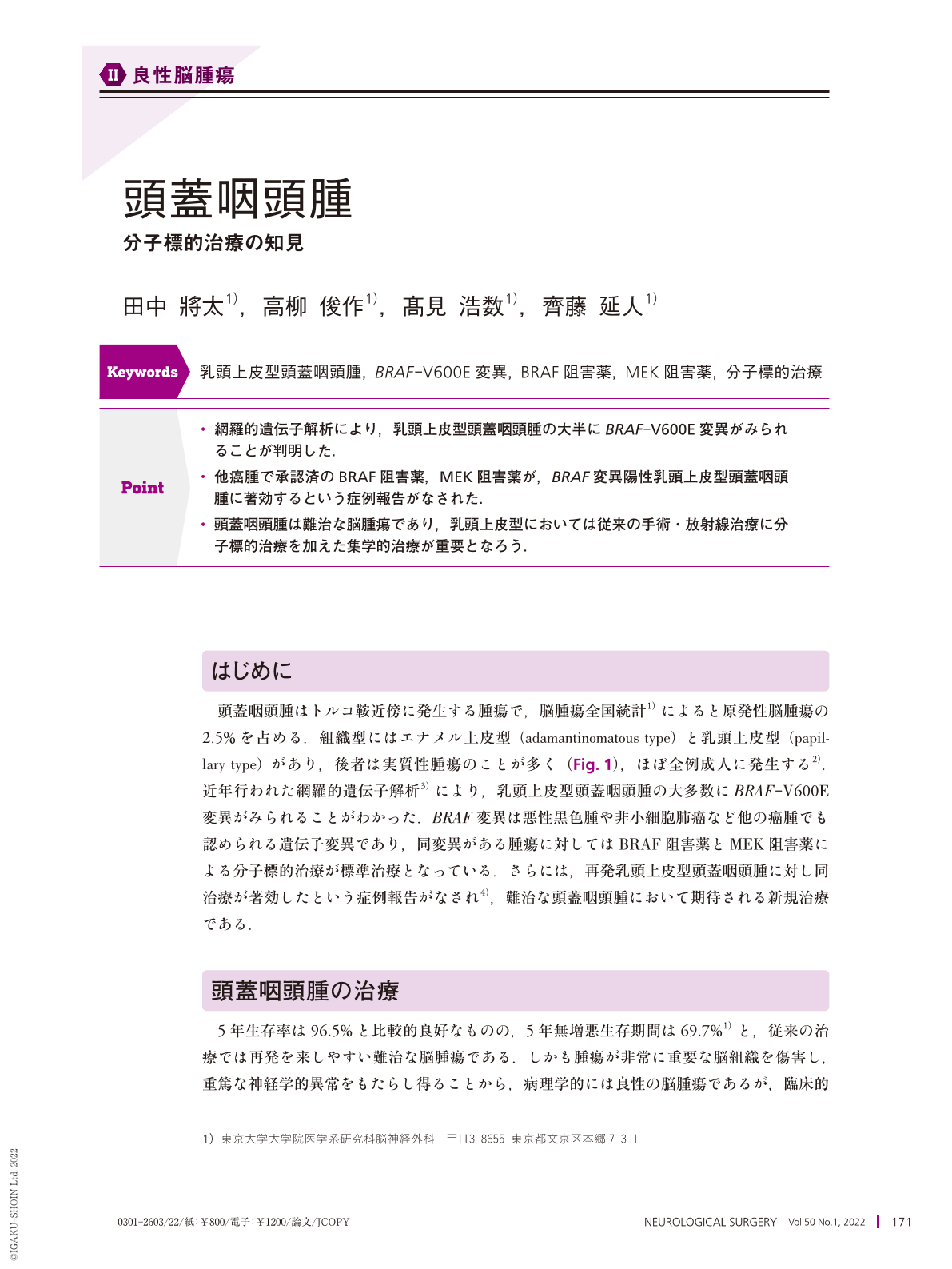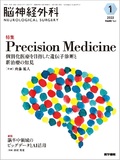Japanese
English
- 有料閲覧
- Abstract 文献概要
- 1ページ目 Look Inside
- 参考文献 Reference
Point
・網羅的遺伝子解析により,乳頭上皮型頭蓋咽頭腫の大半にBRAF-V600E変異がみられることが判明した.
・他癌腫で承認済のBRAF阻害薬,MEK阻害薬が,BRAF変異陽性乳頭上皮型頭蓋咽頭腫に著効するという症例報告がなされた.
・頭蓋咽頭腫は難治な脳腫瘍であり,乳頭上皮型においては従来の手術・放射線治療に分子標的治療を加えた集学的治療が重要となろう.
Craniopharyngioma is a pathologically benign but clinically malignant brain tumor typically located in the parasellar region. It is treated by surgical resection, but in most cases, total removal is not amenable due to its adhesion to the adjacent vital structures, such as the optic nerve, hypothalamus, and pituitary stalk. Often, tumor regrowth or recurrence occursand it is usually treated with either re-resection or radiotherapy, including stereotactic radiosurgery. Either treatment carries some important risks, including blindness, hypopituitarism, and cognitive impairment. A recent comprehensive genomic analysis revealed that the majority of papillary craniopharyngioma cases harbor a hotspot BRAF-V600E mutation. Several case reports have illustrated dramatic response of the residual or recurrent papillary craniopharyngioma to molecularly targeted therapy with a BRAF inhibitor(vemurafenib or dabrafenib)and a MEK inhibitor(trametinib), which are currently approved for melanoma and non-small cell lung carcinoma. This medical treatment can potentially be a wonderful treatment option for papillary craniopharyngioma, given its freedom from the aforementioned serious risks associated with surgery and radiotherapy.

Copyright © 2022, Igaku-Shoin Ltd. All rights reserved.


